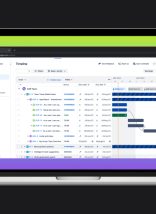2017 presented many challenges to the digital marketing world. Manipulative advertising, fake news, black-hat marketing, and bot traffic have littered the web. The good news is that Google responded swiftly. They implemented quite a few regulation changes. Both the pay-per-click and organic search platforms fell under this umbrella. But, it’s not only Google that reinforced their policies. Most major search engines and social media platforms have updated their regulations. The hope was that this would prevent manipulative content and obstructive advertisements.
As marketers, it’s our job to adapt to these challenges. We must identify strategies that will maintain effectiveness in an ever-changing digital landscape. Google’s 2018 changes will affect marketing as we know it. Be ready and know how to avoid any negative impact on your ad campaigns.
Google Introduces Stricter Ad Regulations in 2018
In September of 2017, Google joined forces with the Coalition for Better Ads. Not long after, the search engine behemoth was ready for action. In February 2018, Google’s Chrome web browser had a new feature. A native ad blocker. It’s goal is simple. It will stop the display of any advertisement that features a non-compliant ad. Google has joined forces with many social media platforms to support this initiative. As a result, the impact could be drastic and far-reaching.

Google’s strategy is to rid the internet of low-quality advertisements. This achievement would create a user-friendly browsing environment. While this is a noble cause, there is a great deal of risk involved. Online businesses and advertisers dread the regulatory change. This should come as no surprise. They stand to lose millions of dollars on wasted ad spend. It’s estimated that ad blockers contribute to a loss of billion dollars
Google Chrome is the clear front runner as the world’s most used web browser. So, their introduction of a native ad blocker will cause that dollar amount to skyrocket. Here’s the added twist. Your advertisement could be compliant with Google’s standards. Yet, it will not show up on a website if there are any non-compliant ads there. And even if your ad gets blocked, you’ll still have to pay for the placement of that ad. Even worse, if your site features non-compliant ads, a warning could pop up. Your visitors would see this and sites will experience a significant drop in traffic.
How Can Your Ads Avoid Negative Impacts from Google?
With so many risks involved, your ad placement and quality both need careful planning. Google now scrutinizes your advertisements more than ever before. They are taking into account content quality, format, and animation. Google’s actions will create a domino effect. More websites and web browsers will introduce ad blockers. So, marketers will kiss more dollars good-bye, wasting them on blocked ad-placements. Also, the wrong ads could result in your entire website landing on the blacklist. You would no longer be able to show advertisements on Google Chrome.

The stakes are high. If you’re feeling concerned right now, worry not. There is a way forward. Your overarching goal should be a user-friendly web environment. This means high quality content and non-manipulative advertisements across your site. To clarify, let’s discuss what Google considers to be “user-friendly“.
What Makes Google Consider an Advertisement Bad?
- Ads that Interrupt: Low-quality pop-up ads are so named for one main reason. They block content. Most pop-ups appear after the content on a page has loaded. So, the user has a brief preview before a large window blocks the page. These hellish ads are among the most commonly cited annoyances of web users. As a result, they will be the first type of advertisement to receive a block.
- Ads that Distract: We’ve all been here. You open a web page and begin reading a few lines of text. And then WHAM! A loud advertisement begins to play, causing you to jump our of your chair. In other cases, you’ll open a web page, and suddenly a large pop-up appears, flashing like a strobe light. Any sort of ad that has distracting audio or visual effects is cause for penalization.
- Large Sticky Ads: Have you ever encountered a large, sticky advertisement? They usually lurk at the bottom or top of a webpage. These types of ads stay in the same position as you scroll through a website. To make them disappear, you have to click “exit”. Regardless of the position of these advertisements, they’re a high blocking risk.
- High Density Mobile Advertisements: You’ve seen these sorts of ads. Most often while viewing full-page slideshows or lists. As you scroll through a slideshow, an advertisement will display between each slides. These ads? Blocked. If the advertisements on a website take up more than 30% of the vertical height of a page, they will not see the light of day.
- Full Screen Advertisements: These advertisements often come accompanied by a 15 or 20 second countdown timer. Without a doubt, you have seen this before. We can all rejoice that Chrome will be blocking them out.
What Makes Google Consider an Advertisement Good?
- Immediate Ads: Users are much more likely to engage with ads that load fast. Accelerated Mobile Pages (AMP) have much higher click-through-rates. They also have more eCPMs (effective cost per thousand impressions).
- Immersive Ads: The design of an advertisement should mesh well with the design of your website. Your goal should be to create advertisements that readers seamlessly interact with.
- Relevant Ads: This needs to be a consideration for both website owners and marketers. Are you a marketer who utilizes Google’s display network? Then your advertisements need to display throughout websites within your niche. And if you’re a website owner, you need to track the ads on your website to make sure they are relevant to your content. If there is a lack of relevance between the ad and the website, there’s a good chance Chrome will block it.

While the new regulations from Google have the potential to derail countless marketing efforts, they also present an opportunity to step back and consider your overall digital strategy. Your keys to success in 2018 should be focused around two main objectives: high-quality content and a friendly user experience. If you craft and place digital ads that are accurate and non-obtrusive, you’ll be able to avoid any wasted advertising dollars.
Feel free to reach out to me and my team, to discuss your approach to marketing. Be sure to read up on more of Google’s polices so you can be better prepared for the changes ahead.





